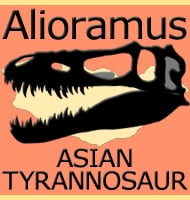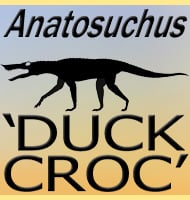In Depth
The dinosaur Oviraptor has a very unfortunate name as it was given to it on the presumption that it stole other dinosaur’s eggs. When the first dinosaur eggs were discovered in Mongolia, they were thought to belong to the herbivorous Protoceratops due to the large number of their remains in the vicinity. Also because the Oviraptor specimen in question has had its skull crushed, it was thought that it was inflicted by a Protoceratops that was guarding the nest. Further, the type species name philoceratops translates to ‘lover of ceratopsians’, as in a preferred food source.
However a study conducted by Mark Norrel et al. in 1993 revealed the presence of an Oviraptor embryo, revealing for the first time that the Oviraptor was not stealing eggs, it was merely tending to its own nest. A resulting scenario that could play out if the Oviraptor had indeed had its skull crushed by a Protoceratops could run along the lines of a Protoceratops disturbing an Oviraptor as it was on the nest. The Oviraptor only thinking about defending its nest begins an immediate threat display and possible attack on the invading Protoceratops. When things escalated too far, the Protoceratops may have been able to capture the head of the Oviraptor in its beak, crushing is skull in the process. The death of the Oviraptor therefore could be indicative of the eggs failure to hatch.
Although its name is now considered a slight against the possible true behaviour of Oviraptor, Henry Fairfield Osborn did not name it out of complete rashness, he merely interpreted the name from the proximity of the Oviraptor remains to the eggs. When naming Oviraptor in his 1924 paper, Osborn did indeed note the fact that the name may not actually be befitting the dinosaur’s true nature.
For what has become a highly popular dinosaur, only partial remains are known, including the aforementioned crushed skull. For this reason reconstruction of Oviraptor is reliant upon the study of another very similar dinosaur, Citipati. In many ways Oviraptor and Citipati are almost identical, and this has allowed for what are considered to be much more accurate reconstructions of Oviraptor.
As a member of the oviraptoridae, Oviraptor almost certainly had a covering of feathers over its entire body. It also likely had a pygostyle, several fused vertebrae at the base of the tail that in modern birds is used as a support for tail feathers. A further comparison that could be drawn up from the Oviraptor nest and individuals of Citipati is nesting behaviour. Study has shown that the feathered covered arms were used to insulate eggs as they were incubated for hatching. Also, Oviraptor seems to have had a similar head crest to Citipati, although perhaps not as large.
With the egg stealing idea now debunked unless hard fossil evidence for Oviraptor eating eggs can be found, it has left doubt as to the exact kind of diet this dinosaur once had. Because it possessed a short beak with no teeth, it could presumably eat anything. One clue is the remains of a lizard found with the original material in what would have been its stomach. Fossils of clams and molluscs are also common to the area, and it’s conceivable that the beak once thought to have been used for breaking eggs could have been used to break the shells of clams. These two facts suggest that animal protein would have formed at least a part of the diet. Oviraptor may have also been able to live an omnivorous lifestyle by also including things like seasonal fruits such as berries in its diet, although without evidence, this can only be speculation.
Further Reading
– Three new Theropoda, Protoceratops zone, central Mongolia. – American Museum Novitates, 144: 12 pages, 8 figs.; (American Museum of Natural History) New York. – H. F. Osborn – 1924. – A new Late Cretaceous family of small theropods (Oviraptoridae n. fam.) in Mongolia. – Doklady Akademii Nauk SSSR 226(3):221-22.3 – R. Barsbold – 1976. – Bezzubyye khishchnyye dinozavry Mongolii [Toothless carnivorous dinosaurs of Mongolia]. Sovmestnaia Sovetsko-Mongol’skaia Paleontologicheskaia Ekspeditsiia Trudy 15:28-39. – R. Barsbold – 1981. – Osteology of Oviraptor philoceratops, a possible herbivorous theropod from the Upper Cretaceous of Mongolia. – Journal of Vertebrate Paleontology. 10 (supp. 003): 42A. – D. K. Smith – 1990. – On the discovery of an oviraptorid skeleton on a nest of eggs at Bayan Mandahu, Inner Mongolia, People’s Republic of China. – Canadian Journal of Earth Sciences. 33 (4): 631−636. – Z. Dong & P. J. Currie – 1996.










